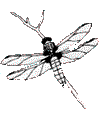
Mayford Heritage Pond

Fungi
In autumn the fungal world comes to the fore on Mayford Green. Species with wonderful names such as Earth Fan, Bay Boletus, Eyelash Fungus, Velvet Shank, and Dead Man's Fingers are just some of these fascinating life forms that emerge from the ground and rotting wood.
Fungi are not plants and are in their own Kingdom of living things. They do not contain chlorophyll and therefore cannot make their own food, which they have to obtain by various means. This is usually done by feeding off dead stuff or by parasitizing plants or other fungi.
The fungi that you see are just the fruiting bodies, the equivalent to an apple on a tree. The body of a fungus, called the mycelium, is usually underground and made up from tiny individual thread-like structures called hyphae.
To encourage a greater variety of fungi several individual logs have been placed around the edge of the area and a larger stack of dead wood has been placed near the bushes at the back.
| Scientific Name | English Name |
|---|---|
| Inocybe geophylla | |
| Inocybe sp. | |
| Armillaria mellea | Honey Fungus |
| Flammulina velutipes | Velvet Shank |
| Hygrocybe nivea | Snowy Wax Cap |
| Auricularia auricula-judae | Jew's Ear |
| Boletus chrysenteron | Red-cracked Bolete |
| Boletus appendiculatus | |
| Coprinus micaceus | Glistening Ink Cap |
| Coprinus comatus | Shaggy Ink Cap |
| Coprinus lagopus | |
| Coprinus atramentarius | Common Ink Cap |
| Coprinus plicatilis | |
| Xylaria hypoxylon | Candlesnuff Fungus |
| Xylaria polymorpha | Dead Man's Fingers |
| Lyophyllum decastes | |
| Polyporus squamosus | Dryad's Saddle |
| Russula fellea | Geranium-scented Russula |
| Russula brunneoviolacea | |
| Amanita rubescens | The Blusher |
| Paxillus involutus | Brown Roll Rim |
| Laccaria laccata | The Deceiver |
| Pholiota adiposa | |
| Collybia fusipes | |
| Mycena sp | |
| Daedalea quercina | Maze Gill |
| Rhodotus palmatus | |
| Scutellinia scutellata | Eyelash Fungus |
| Aleuria aurantia | Orange Peel Fungus |
| Clavulinopsis helvola | |
| Thelephora terrestris | Earth Fan |
| Scleroderma citrinum | Common Earthball |